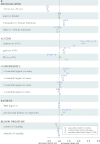Early outcomes among those initiating chronic dialysis in the United States
- PMID: 21959599
- PMCID: PMC3359565
- DOI: 10.2215/CJN.03680411
Early outcomes among those initiating chronic dialysis in the United States
Abstract
Background and objectives: Approximately one million Americans initiated chronic dialysis over the past decade; the first-year mortality rate reported by the U.S. Renal Data System was 19.6% in 2007. This estimate has historically excluded the first 90 days of chronic dialysis.
Design, setting, participants, & measurements: To characterize the mortality and hospitalization risks for patients starting chronic renal replacement therapy, we followed all patients initiating dialysis in 1733 facilities throughout the United States (n = 303,289). Mortality and hospitalizations within the first 90 days were compared with outcomes after this period, and the results were analyzed. Standard time-series analyses were used to depict the weekly risk estimates for each outcome.
Results: Between 1997 and 2009, >300,000 patients initiated chronic dialysis and were followed for >35 million dialysis treatments; the highest risk for morbidity and mortality occurred in the first 2 weeks of treatment. The initial 2-week risk of death for a typical dialysis patient was 2.72-fold higher, and the risk of hospitalization was 1.95-fold higher when compared to a patient who survived the first year of chronic dialysis (week 53 after initiation). Similarly, over the first 90 days, the risk of mortality and hospitalization remained elevated. Thereafter, between days 91 and 365, these risks decreased considerably by more than half. Surviving these first weeks of dialysis was most associated with the type of vascular access. Initiating dialysis with a fistula was associated with a decreased early death risk by 61%, whereas peritoneal dialysis decreased the risk by 87%.
Conclusions: The first 2 weeks of chronic dialysis are associated with heightened mortality and hospitalization risks, which remain elevated over the ensuing 90 days.
Figures




Comment in
-
A preponderance of evidence is sufficient.Clin J Am Soc Nephrol. 2011 Nov;6(11):2561-3. doi: 10.2215/CJN.09440911. Epub 2011 Oct 6. Clin J Am Soc Nephrol. 2011. PMID: 21980180 No abstract available.
References
-
- Incident and prevalent counts by quarter: United States Renal Data System. http://www.usrds.org/qtr/qrt_report_table_c_01_10.html, accessed 10/18/10
-
- U.S. Renal Data System, USRDS 2009 Annual Data Report: Atlas of Chronic Kidney Disease and End-Stage Renal Disease in the United States. Bethesda, MD, National Institutes of Health, National Institute of Diabetes and Digestive and Kidney Diseases, 2009
-
- Danovitch GM, Cohen DJ, Weir MR, Stock PG, Bennett WM, Christensen LL, Sung RS: Current status of kidney and pancreas transplantation in the United States, 1994–2003. Am J Transplant 5: 904–915, 2005 - PubMed
-
- The U.S. Organ Procurement and Transplantation Network and the Scientific Registry of Transplant Recipients: Annual Report 2008. http://optn.transplant.hrsa.gov/ar2008/, accessed 10/15/10
-
- Nissenson AR, Rettig RA: Medicare's end-stage renal disease program: Current status and future prospects. Health Aff (Millwood) 18: 161–179, 1999 - PubMed
MeSH terms
LinkOut - more resources
Full Text Sources
Other Literature Sources
Medical
Miscellaneous

